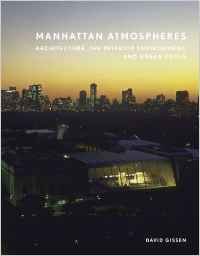
Afhentning i butik
Hurtig levering 1-3 hverdage
Fast lav fragt 49 DKK

During Manhattan’s crisis years between the 1960s and early 1980s,
the city’s great park networks, sanitarian projects of light, air, and
water, and its monumental public works were falling apart. Images of
flooded streets, blackened air, collapsed highways, and burning
buildings characterize our understanding of the city’s landscape
throughout this period. At the same time, architects reimagined interior
spaces as a response to these urban disasters. David Gissen reveals
that a new chapter in New York’s environmental history was unfolding
inside the city’s gleaming late-modern architecture.
In Manhattan Atmospheres,
Gissen uncovers an alternative environmental history by examining the
megastructural apartments, verdant corporate atria, enormous trading
rooms, and mammoth museum galleries that were built in this era. These
environments were integral to New York City’s restructuring and also
some of the most politicized fabrications of nature found in the city.
Behind the tinted and mirrored glass, the vaporous cooled and warmed
atmospheres offered protection from pollution, stewarded urban greenery,
and helped preserve precious cultural artifacts. But, entangled with
efforts to gentrify neighborhoods, the new settings served as a stage
for demographic transformations and shifts in cultural concentration and
enriched the overall corporatization of the city.
Caught in
politicized debates, these spaces were far from simple solutions to the
city’s dilemmas. Making a significant contribution to postwar
architectural history, critical geography, and urban studies, Gissen
deftly demonstrates how these sealed environments were not closed off
conceptually from the surrounding city but instead were key sites of
environmental production and, in turn, a new type of socionatural form.
Relaterede produkter